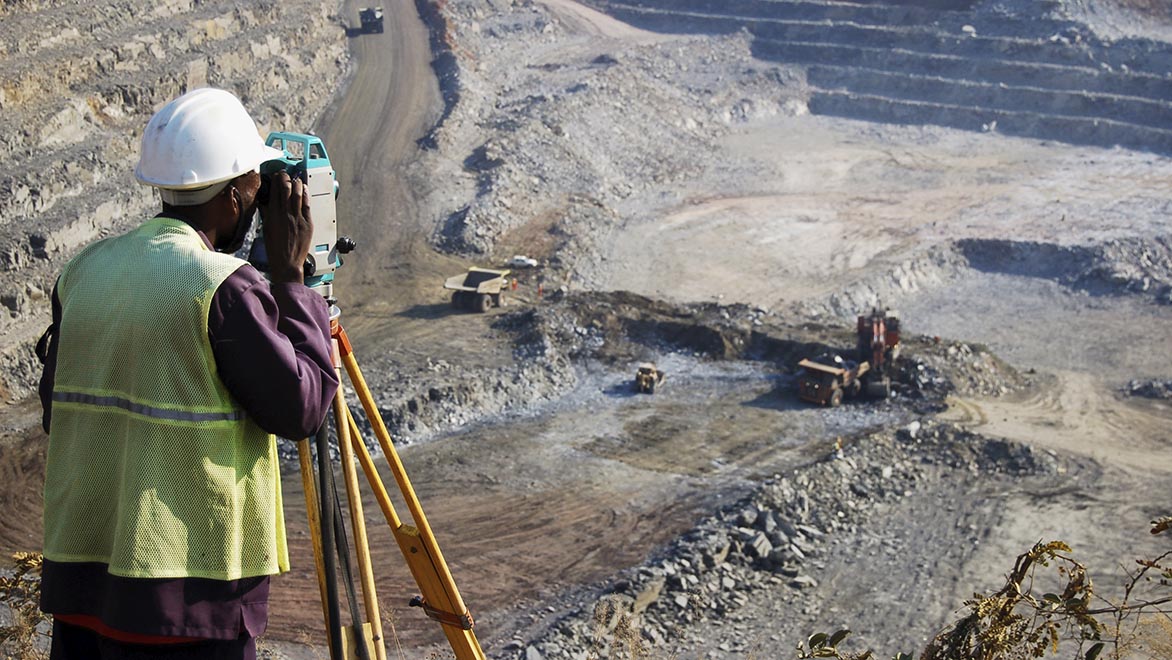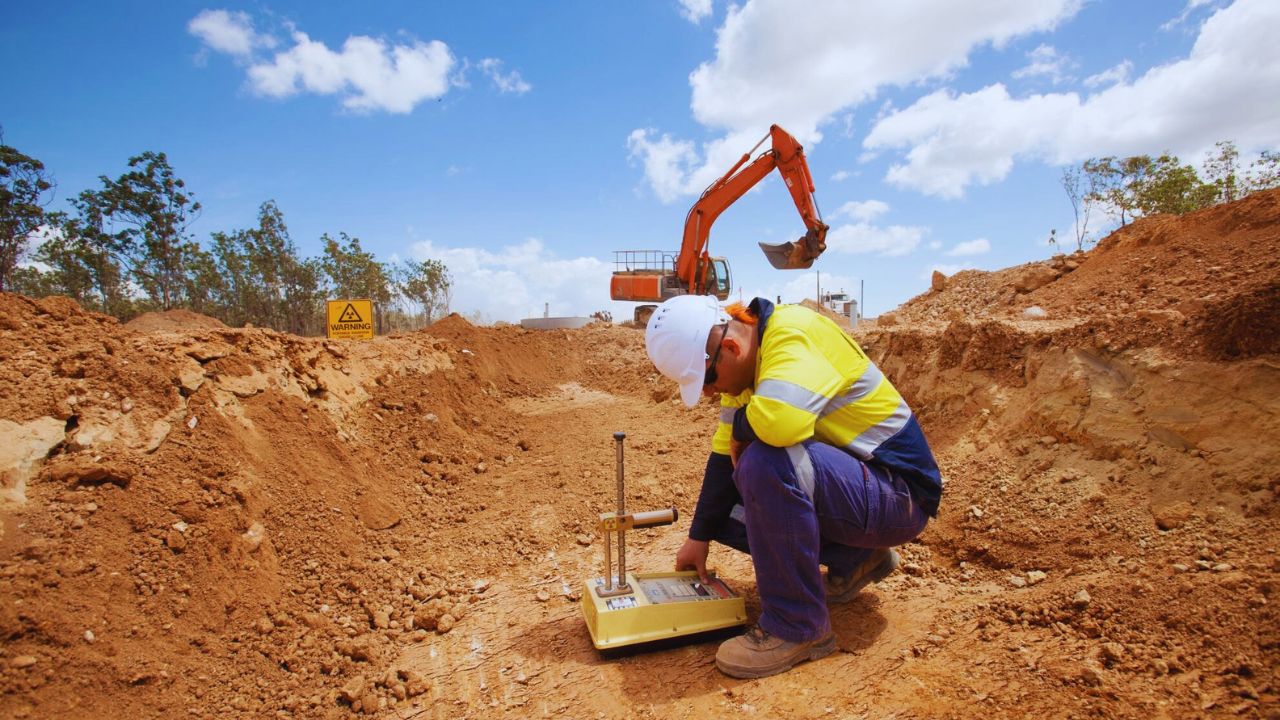Recognizing the Basics: About Geotechnical Engineering in Modern Construction
Recognizing the Basics: About Geotechnical Engineering in Modern Construction
Blog Article
Discovering the Essential Concepts and Applications of Geotechnical Design for Lasting Facilities Advancement
The junction of geotechnical engineering and lasting infrastructure development provides an engaging opportunity to improve both design efficacy and environmental responsibility. By recognizing vital principles such as soil technicians, site characterization, and foundation design techniques, designers can develop options that are not only effective yet additionally reduce ecological impacts.
Key Concepts of Geotechnical Engineering
Recognizing the crucial concepts of geotechnical design is important for making sustainable infrastructure (all about geotechnical engineering). This self-control concentrates on the interaction between soil, rock, and structures, playing a vital function in the security and efficiency of engineering projects. The primary concept is the assessment of subsurface problems with site investigations, which provide beneficial details regarding soil properties, stratification, and groundwater levels
One more vital principle is the application of reliable stress and anxiety theory, which helps engineers recognize just how soil behavior modifications under differing loads. This understanding is essential for evaluating the bearing capability of foundations and guaranteeing that structures can withstand both dynamic and static pressures.
Furthermore, the concepts of soil-structure interaction and incline stability are essential to geotechnical layout, as they educate decisions on the positioning and style of keeping inclines, wall surfaces, and embankments.
Lastly, geotechnical designers need to take into consideration sustainability by promoting making use of in your area sourced materials, decreasing ecological influence, and maximizing layouts for longevity. By sticking to these principles, geotechnical engineering contributes significantly to the development of lasting and resistant facilities that meets the needs of society while securing the environment.
Dirt Mechanics and Its Value
Soil auto mechanics functions as the foundation of geotechnical engineering, giving the scientific concepts required to examine the behavior of dirt under various problems. Understanding soil mechanics is crucial for predicting how dirt will react to lots, changes in wetness web content, and other ecological aspects. This expertise permits designers to create structures that can withstand the stress put in by the dirt and ensure security and safety.
The research of dirt auto mechanics includes numerous aspects, consisting of soil classification, shear compressibility, permeability, and strength. These aspects affect the style of structures, maintaining wall surfaces, and other geotechnical structures, making it important to examine dirt buildings precisely. The shear stamina of dirt straight influences the stability of inclines and excavations, while compressibility influences negotiation forecasts for buildings.
Moreover, soil mechanics plays a crucial role in lasting facilities development. By recognizing the soil's habits, designers can reduce ecological impacts, maximize material usage, and boost the durability of structures. This assimilation of dirt technicians into geotechnical engineering methods not only guarantees security but likewise adds to the overall sustainability of building and construction tasks, advertising effective resource administration and ecological stewardship.
Site Characterization Techniques
Efficient website characterization techniques are critical for collecting essential info regarding subsurface conditions before construction - all about geotechnical engineering. These methods provide valuable insights into soil buildings, rock formations, groundwater levels, and prospective geohazards, therefore educating task layout and mitigating threats
One extensively employed technique is piercing, which permits for straight tasting of dirt and rock layers. This can be matched by in-situ screening, such as Conventional Infiltration Examinations (SPT) and Cone Penetration Examinations (CPT), to examine dirt toughness and stratification. Geophysical approaches, including seismic refraction and electrical resistivity surveys, enable non-invasive analysis of subsurface products and frameworks, supplying a more comprehensive viewpoint on geological conditions.
Furthermore, laboratory testing plays an important function in assessing dirt examples obtained from boring. Tests such as grain size analysis, Atterberg limits, and triaxial shear tests produce vital information on dirt behavior under numerous loading conditions.
Including these site characterization methods not only boosts the understanding of website conditions but likewise supports sustainable framework growth by guaranteeing that tasks are designed with suitable safety and security margins and efficiency specifications. Hence, an extensive site characterization is essential for informed decision-making in geotechnical design.
Foundation Style Techniques
Foundation layout strategies are vital for guaranteeing the security and durability of frameworks in numerous geotechnical contexts. These strategies start with a thorough website examination, which includes dirt testing and analysis to determine the physical properties of the subsoil. Recognizing dirt behavior under tons is important for choosing the appropriate structure type, whether shallow or deep.
Superficial structures, such as spread footings or floor covering foundations, are commonly employed when ideal soil layers are offered near the surface area. Alternatively, deep structures, such as piles or pierced shafts, are made use of in circumstances where surface dirts are poor to support architectural loads.

Sustainable Practices in Geotechnical Engineering
The combination of sustainable methods in geotechnical engineering plays a pivotal function in enhancing the economic and ecological practicality of infrastructure projects. By focusing on resource effectiveness and lessening ecological effects, engineers can contribute to the growth of durable facilities systems.
One trick lasting practice entails making use of alternate products, such as recycled accumulations and industrial byproducts, which can minimize the need for virgin sources and reduced carbon emissions. Additionally, soil stablizing strategies, consisting of the application of bioengineering approaches, enhance soil buildings while promoting environmental equilibrium.
In addition, the application of advanced geotechnical modeling and tracking modern technologies enables much better forecast and monitoring of ground conditions, resulting in enhanced style solutions and source use. These innovations also promote the analysis of lasting efficiency, making sure that frameworks remain useful and risk-free over their lifespan.

Verdict
In verdict, the principles and applications of geotechnical design play a vital function in lasting framework growth. Stressing soil auto mechanics, website characterization, and ingenious foundation style strategies improves the strength and performance of structures.
By comprehending crucial concepts such as soil auto mechanics, site characterization, and foundation layout techniques, designers can develop remedies that are not only reliable but also minimize environmental footprints.Dirt auto mechanics serves as the structure of geotechnical design, providing the clinical concepts needed to examine the actions of dirt under various conditions. Comprehending dirt technicians is crucial for anticipating just how soil will react to tons, changes in wetness material, and other ecological factors.The study of soil technicians encompasses numerous facets, including soil category, shear compressibility, strength, and leaks in the structure. These variables affect the layout of foundations, keeping walls, and other geotechnical frameworks, making it vital to analyze dirt properties precisely.
Report this page